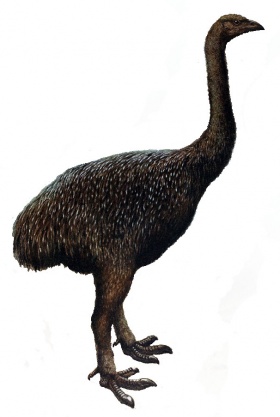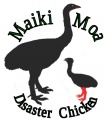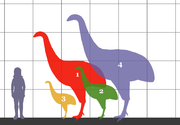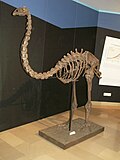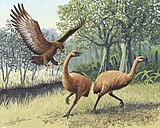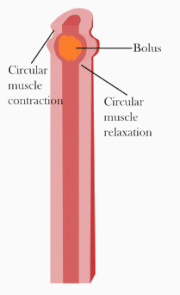Moa
From WikiEducator
Contents
- 1 Moa
- 1.1 Maiki Moa - Disaster Chicken
- 1.2 Whakatauki
- 1.3 Introduction
- 1.4 Groups
- 1.5 Gate/fence
- 1.6 Moa Species
- 1.7 Tane Mahuta
- 1.8 Moa Description
- 1.9 Moa Habitat
- 1.10 Moa Diet
- 1.11 Moa Behaviour
- 1.12 Moa Reproduction
- 1.13 Moa Maori
- 1.14 Moa Kahere
- 1.15 Moa Middens
- 1.16 Moa Paths
- 1.17 Moa Sprengle
- 1.18 Moa Questions
- 1.19 Links
Moa
Living World Science Programme based around an extinct flightless bird from Aotearoa, New Zealand
Maiki Moa - Disaster Chicken
Geological, flora and fauna narratives of Aotearoa - retold through the moa
At the end of the programme students will:
- Understand the processes of life and appreciate the diversity of living things
- Bird/plant adaptations, human impact, pest eradication and conservation
- Understand how living things interact with each other and with the non-living environment - ecology
- Bird/plant collaboration, habitat destruction and climate change impact
- Understand the processes that drive change in groups of living things over long periods of time and be able to discuss these changes - evolution
Whakatauki
Ko te manu e kai ana i te miro, nōna te ngahere. Ko te manu e kai ana i te mātauranga, nōna te ao. The bird that partakes of the miro berry reigns in the forest. The bird that partakes of the power of knowledge has access to the world.
Introduction
- Moa waiata
- Porowhita time, play “Orokonui” game, own rules (Oro 3rs), link them to porowhita time ...
- Orokonui video - animal/plant bingo
- Dream of flying, do all birds fly, what makes a bird a bird (feathers)
- Feather uses - flight – flap, insulation – zip up/zip down, waterproofing – feel smooth, camouflage, show/scare off colours
- Does anything fly that is not a bird - insects, bats … differences
- Feather uses - flight – flap, insulation – zip up/zip down, waterproofing – feel smooth, camouflage, show/scare off colours
- All other animals introduced … us too …
- No land mammals, prehistoric NZ birds evolved to fill niches, only threat were birds from above haast eagle & kārearea – NZ Falcon
- Advantage to stay undercover in the forest, grasses, flightless, camouflaged, nocturnal habits
- Mammalian predators great sense of smell/nocturnal/tooth/clawed
- Threatened species categories
- Extinct - Moa, Adzebill, Huia Finsch's duck
- Nationally critical - Takahē, Haast tokoeka
- Nationally vulnerable - South Island kākā, Southern falcon, Stitchbird/hihi, Yellowhead/mōhua
- Sweet/strong/musky smelling birds - kakapo, kiwi, penguin
- Easy targets - hole nesting birds e.g. kaka, mohua
- Freezing defence mechanism from aerial predators – takahe, adzebill
- Ecosanctuary aim - restore forest ecosystem to its pre-human state
Morning tea … wharepaku, wai and wrappers
Groups
In and around the visitor centre
- Avian beauties (listening bubble) 5min
- Play bird call memory
- Tui, Korimako, Kaka, Piwakawaka, Takahe
- Sound of the moa - reasons, seasons
- Orokonui gate pass - bird recognition sheet
- Play bird call memory
- Hidden gems (Apple/Gary) 5min
- Introduced frog, eyeballs push food down throat, drink/partial breath skin, NZ?
- Mokomoko kakariki, endangered, lick eyeball, walk up glass, predators, people
- Food for the moa?
- Moa nature table
- Historic helpers (stone building/ti kouka) 5 - 15min
- Te ara Moa/Maori/Pakeha, milking shed, no#8wire eel and effluent, belted galloways - then/now
- Structural strengths (architecture/green technology) 15 - 30min
- Sited on ara moa - saddle, north facing and with water
- Treasure hunt/point out and explain - eco features e.g double glazing keeps in warmth
- Others recycled wood/containers, solar panels, north facing, concrete slab
- 10 good, 20 great etc
- Others recycled wood/containers, solar panels, north facing, concrete slab
- Defensive defenders (fence/traps/poison/tracker tunnel) 15 - 45min
- Sentient beings - law passed 2015 - photos of dogs, cats, cows, sheep,
- Feel – hungry, hot, cold, sad, joyous, remorseful
- Perceive - that smells like my friend I will wag my tail,
- Social - recognise and interact with each other
- Rules for killing - targeted, humane, fast, 24 hour for live capture
- Poisons - how they work, why use them
- Story of Tataramoa - walking into the forest...
- Sentient beings - law passed 2015 - photos of dogs, cats, cows, sheep,
- Harakeke/harvesters (pa harakeke) 30 - 60min
- Ropes, snares and traps
Gate/fence
- How can I get in – rabbit, baby mouse, possum, cat, ferret etc
- Electric trip wire
- Lock, 2 doors, animal trap
- Bag check
- What is the biggest threat to our native flora and fauna?
Time machine, tock,tock....back to the land of the Moa
- DNA from Moa could allow for it to be cloned back from extinction
Moa Species
- The giant moa found in this region could look over the fence of defence
- Giant Moa – N/S - O
- Heavy-footed Moa - O
- Stout-legged Moa - O
- Eastern Moa - O
- Little Bush Moa - O
- Crested Moa
- Mantell’s Moa
- Coastal Moa
- Upland Moa
- - O indicates Moa remains found near Orokonui ecosanctuary
Tane Mahuta
- God of forest - atua
- Hakuturi - spirit gaudians - birds - eyes and ears
- Holding pikopiko -
- Rata and the canoe
- Little information (legends/stories) about moa available from Maori
- May be indicative of early extinction - 300 years after human habitation
Moa Description
- Ratite - sternum no keel
- Moa - long strong neck, a flat, broad beak, large eyes and nostrils
- Powerful, bare legs, strong feet - 3 sturdy claws and a rear facing toe
- Massive leg muscles enabled a powerful forward motion kick - injuring/killing attackers
- Moa have main muscles in the hips and thighs
- Longer leg species enabled fast speed running
- Supported a continually browsing head
- Acute eyesight to sense predators from the sky
- Sensitive to smell - able to locate delicate ground dwelling herbs
- Plumage mainly browns with some white tips - differences male/female/juvenile?
Moa Habitat
- Moa were found throughout the country apart from the Chatham Islands
- Lived high in mountain forests, lowland scrub, grasslands, swamps and coastal regions
- Moa were not afraid of water - fed in swamps
- and if like other living ratites may have taken baths
- and were probably good swimmers
Moa Diet
- Scientists can tell what Moa ate by studying coprolite - fossilised poo
- Moa were mainly herbivorous - seeds, plant matter, mushrooms
- Also ate eggs, insects, small lizards, frogs etc
- Moa species had differing diets - not competing
- Moa swallowed large quantities of stones (gastroliths)
- Moa diet and anatomy gave clues about their digestive system
- Food was rolled into a bolus at back of the mouth
- Peristalsis - muscular waves rippled food down the oesophagus
- Entering the crop, a food storage area
- Moved as required into the proventriculus, the first part of the stomach
- Food is soaked in digestive enzymes
- Before entering the ventriculus or gizzard
- Where food is ground up by gizzard stones (gastroliths)
- Piles of gastroliths have weighed up to 5kg
- Long intestines - maybe up to 15 metres long
- Gaining maximum absorption from a diet of mainly tough plant matter
- Finally expelled from the egg laying and poo depositing cloaca
- As huge piles of green and white tipped poos
- Moa size would indicate a requirement for large amounts of food
- Travel big distances browsing
- Seasonal foragers locating known food sources
- May have had food territories
- Many NZ plants evolved defensive features to stop the moa from browsing on them
- Divaricate - small-leaved shrubs and low-growing trees with densely interlaced stems
- Stems spread apart at wide angles and leaves are often small with few available for potential browsers
- Avoids browsing by moa
- Stems spread apart at wide angles and leaves are often small with few available for potential browsers
Moa Behaviour
- Diurnal
- Shared shelters with other moa species as well as own
- Solitary or coupled bush dweller
- Seasonal open country in herds
- Males were possibly territorial and defended territory aggressively
- When a Moa was threatened, it may have remained motionless to appear less obvious, run away or fought
- If caught, the Moa could kick out at its pursuer with its strong legs or peck with its powerful and sharp beak
- Moa may have used their size or posture to intimidate a rival or predator - fluffing up feathers, hiss loudly or staring down
- Moa might have been vocal birds - whistling, booming, hissing or snorting
- Gender dimorphism – females much bigger
- Nest sharing - 1-2 eggs?
Moa Reproduction
- Breeding season probably September - November
- Single mate or possible multiple partners
- Male probably did some showing off to court a solitary female
- Defending territory by patrolling and displaying or making loud booming calls or inflate their necks or raising feathers
- Moa may have engaged in a co-operative breeding - after mating, several females from the neighbourhood may deposit their eggs in communal nest pits
- An alpha female may have worked with the male to incubate the eggs
- Male/s sat on the egg/s - female was to large
- Eggs possibly took up to 6 weeks too hatch
- Male/s may have been the main carer/s
- Clustering around in a group
- Teaching how to feed and seek protection from sky predators
- Clustering around in a group
- During first year, Moa chicks probably grew fast
- Maturing at 2-5 years
- Life span - between 50 and 75 years
Moa Maori
- Kupe the great Polynesian navigator’s mate Ngahue, in Waka Tawhirirangi, finds then kills a giant moa from beside Wairere falls Kaimai ranges
- Then discovers pounamu from Arahura river, Westland
- Returns to eastern Polynesia with preserved Moa and block of greenstone.
- Greenstone toki used to cut down trees and carve out 2 oceanic waka Tainui and Te Arawa.
- Returns to eastern Polynesia with preserved Moa and block of greenstone.
- Then discovers pounamu from Arahura river, Westland
- Reasons for leaving home islands – over-crowding, conflict, hunger and drawn by promises of food aplenty and Moa being the proof!
- Moa polynesian word for bird/chicken!
- How were moa preserved – smoked, salted, kelp bags all of previous?
- Greenstone found on Raul Island could have come from a waka returning from polynesia?
- How were moa preserved – smoked, salted, kelp bags all of previous?
- Moa polynesian word for bird/chicken!
- Bird navigation from waka kuaka flying to/from Alaska, Siberia and Korea (March and October)
- Pipiwhararoa migrating then returns to eastern pacific
Moa Kahere
- Miro ngahuru (autumn) ripening red berries, sweet pineapple flavour, large seeds, collected by Maori in baskets hauled into trees, eaten by kereru from branches who knock seeds to ngahere floor for the moa to devour
- During autumn, red pouch fungi about the same colour and size as the fallen miro berries blooms under the miro
- Moa scoop up miro berries and red pouch fungi who are part of the weraroa family
- During autumn, red pouch fungi about the same colour and size as the fallen miro berries blooms under the miro
- The spore of the fungi need the gut of an animal to spread it in their poo - the moa were the perfect animal to do so!
- What nutrition is contained in miro seeds and red pouch fungi?
- Kowhai seed pods contain hard yellow seeds, need to be chipped, scoured and well soaked before they will germinate
- Kowhai leaves, either divericating or too high for moa
- Kereru fly onto swaying stalks of fresh spring growth for a nitrogenous feed
- Autumn ripe seed pods droop seductively from the tree, difficult access for a kereru - easy grazing height and angle for moa
- It's grinding and chipping stomach stones and piles of dripping wet dung - perfect conditions for kowhai seeds
- What benefits does nitrogeon have on courting birds?
- The entire tree and its seeds are poisonous to humans!
- Nipped off rimu
- Kaka beak?
Moa Middens
- Warrington
Moa Paths
- Moa created pathways to food, water and shelter
- Maori probably used these well formed paths for hunting Moa and exploring
- Moa paths crossed mountain ranges from east to west coast
- Maori probably used these well formed paths for hunting Moa and exploring
Moa Sprengle
- Horopito – typhoid
- Horoeka – Chatham Island
- Coprosma – diverification
- Sir Richard Owen
- Without exception, ratite chicks are capable of swimming and even diving
Moa Questions
- Why would Moa have different plumages
- Diet - colourisation from differing foods, mate knows where the good food is
- Age - older birds indicate good survival skills - food, shelter and predators
- Gender - males brighter colours for courtship dances, camouflage
- Hormones - egg laying and chick rearing
- Why would Moa vocalise
- and so on
- Were moa shy, solitary or communal
Links
- Quinn Berentson: the moa (13min)
- Fossil moa droppings give insight on diet - Listen to Janet Wilmshurst on Checkpoint (3min)
- Moa poo clues
- Poos hold the clues
- Middens
- Death-of-the-moa
- Breaking up of Gondwana
- Moa were plain Janes
- New archaeological site
- Investigating middens
- NZ trees use camouflage
- Ever-Wondered episode 9 Middens and DNA research
- Birds role in ecosystems
- Native bird adaptations
- Distribution of moa
- Unscrambling moa eggs
- Moa diversity
- Moa family groupings
- Genetic tree of moa and other ratites
- Ratite/human comparison
